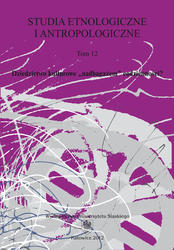

Against the background of a dramatic and complicated post-war past of Warmia and Mazuria, the author of the article makes an attempt to show area impoverishment being the result of among others the ignorance, and often, a methodical distortion of a historic substance, constituting an element of foreign heritage. In an outline, she presents a difficult process of regaining the awareness of a multicultural heritage of these lands, underlining a contribution of the Borussia Cultural Community to the development of a different culture of inheritance than the one before the political transformation. A work of art being a carrier of historical and aesthetic values is also a memory of the place. Especially the architecture monuments realize this mission combining the present with the past. They remind of their old identity performing a new function today. Basing on the example of the project Mendelson’s House, realized by Borussia in Olsztyn, the possibilities of the restoration of the very object connected with the history of East-Prussian Jews and an activity of Erich Mendelson, a world-famous architect from Olsztyn were presented. The project realized by Borussia seems to be a solution adjusted to the contemporary needs connected with the acquisition of cultural heritage and places of memory. In view of its aesthetic values, art is a special carrier of memory and cultural good building, as attempted to be shown, the sense of a region al identity inscribing into the idea of an open regionalism. The art of this region is perceived as dominants of the cultural memory when exploring and acquiring a multicultural heritage of Warmia and Mazuria.
Download files
Citation rules

Vol. 12 (2012)
Published:
 10.31261/SEIA
10.31261/SEIA